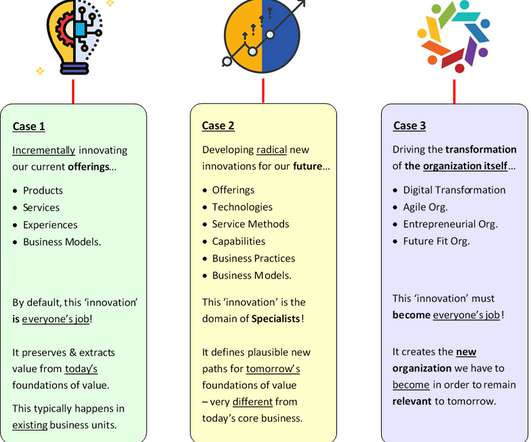8 Types of Innovation in Business: A Comprehensive Guide
Qmarkets
MARCH 27, 2024
Radical & Disruptive Innovation On the flip side, radical and disruptive innovation challenges the status quo by introducing new concepts, products, or models that shift market dynamics. Radical innovation is about making significant leaps forward, often creating new industries or reshaping existing ones.
























Let's personalize your content